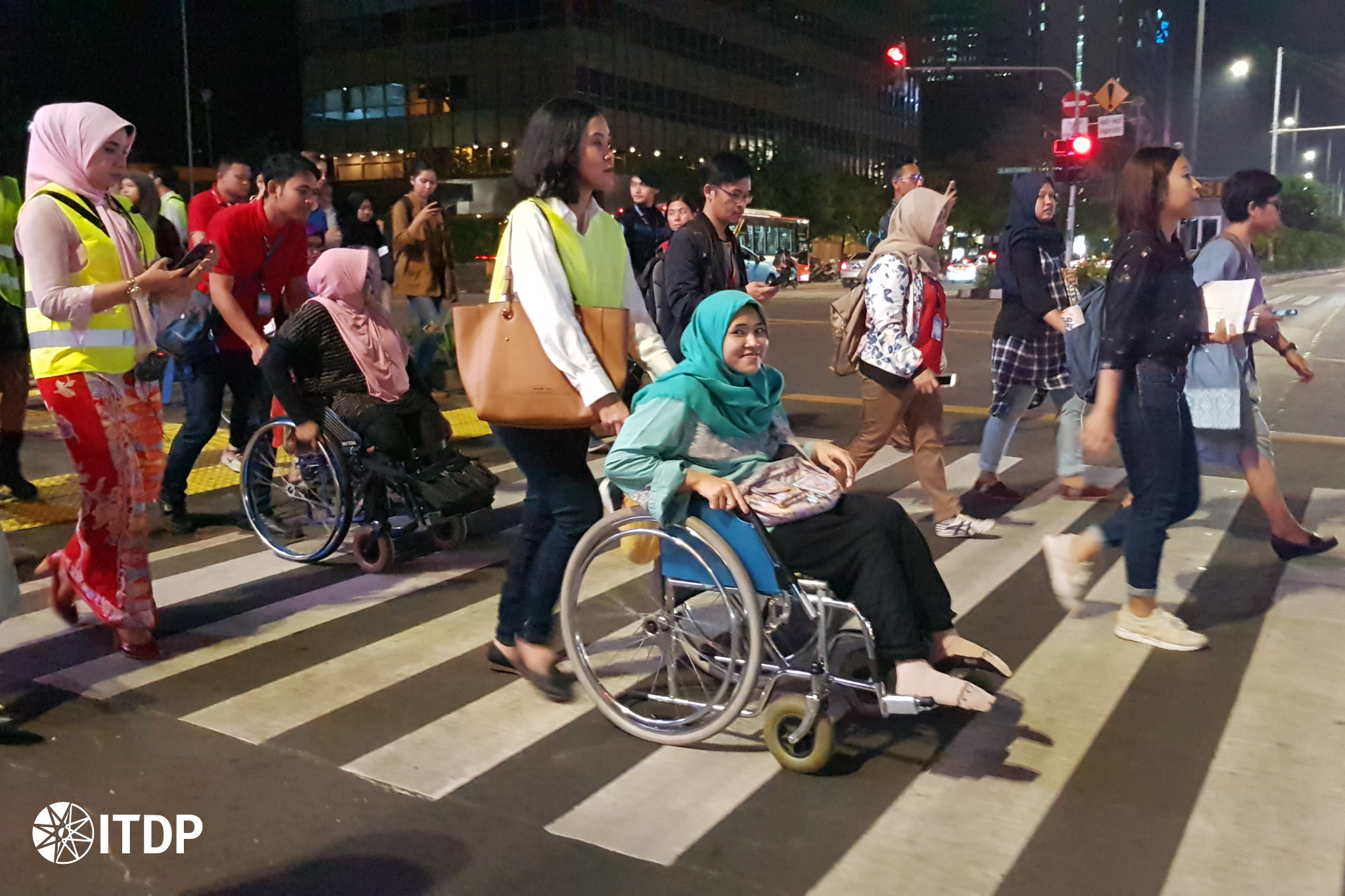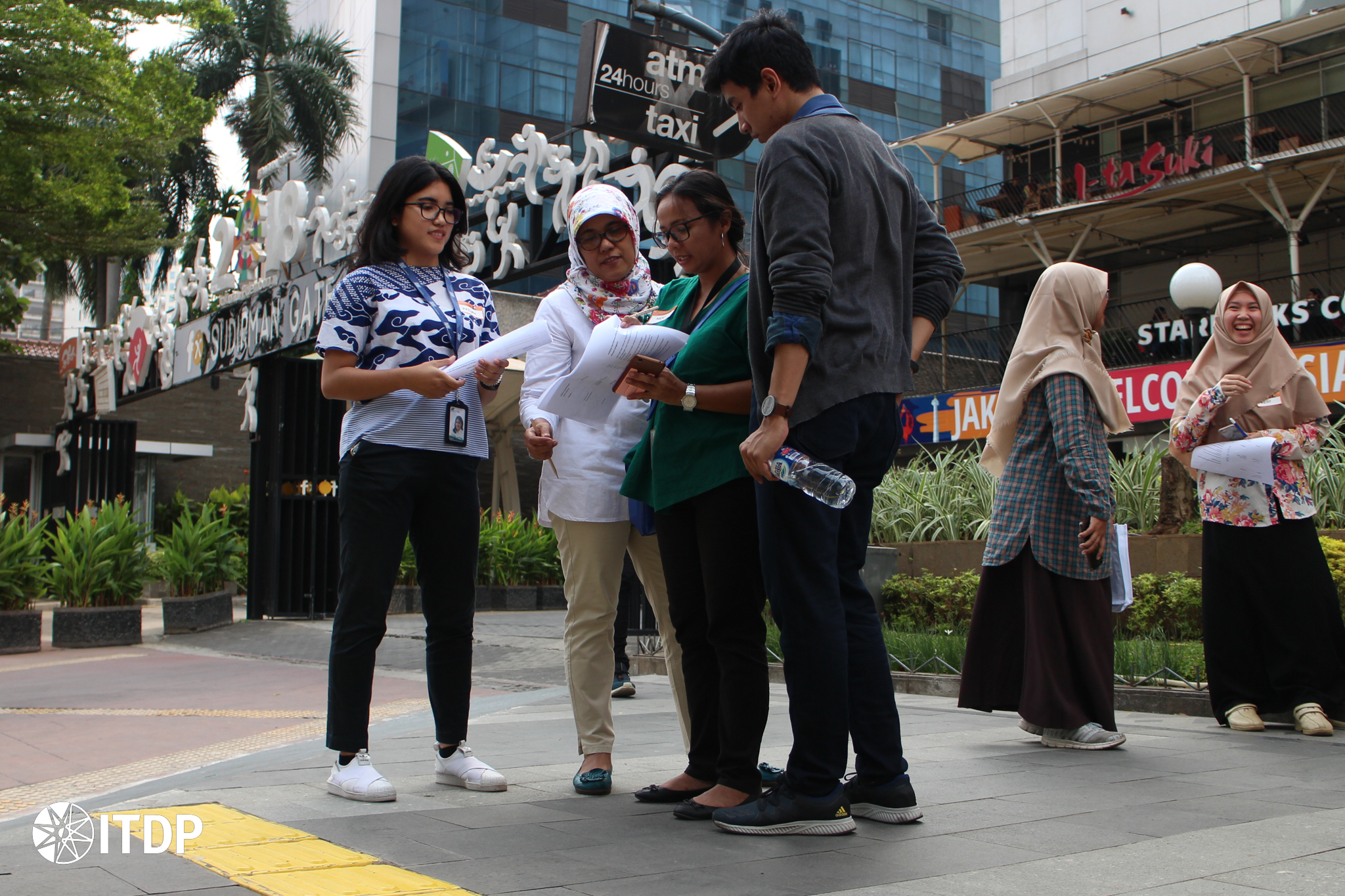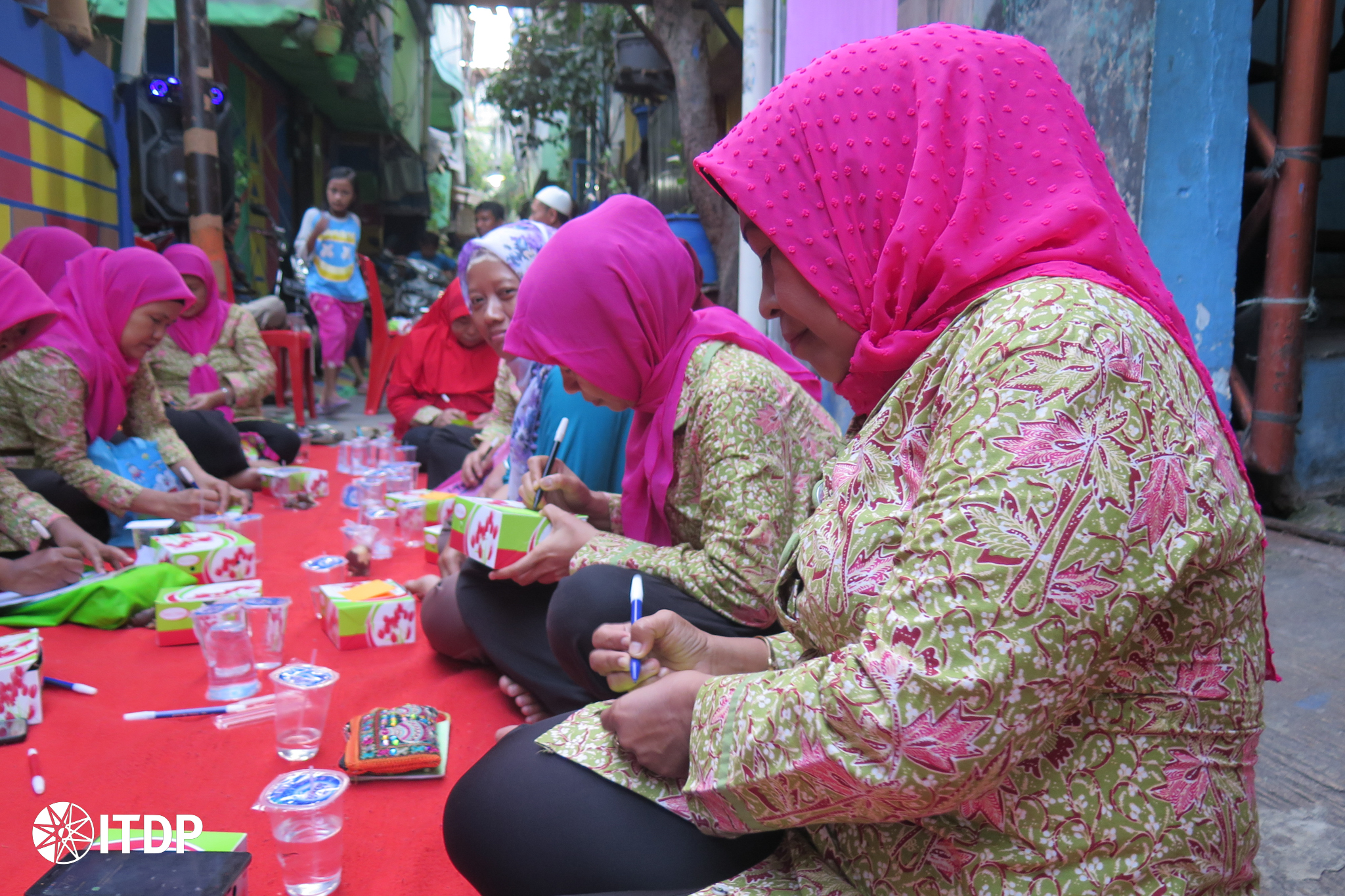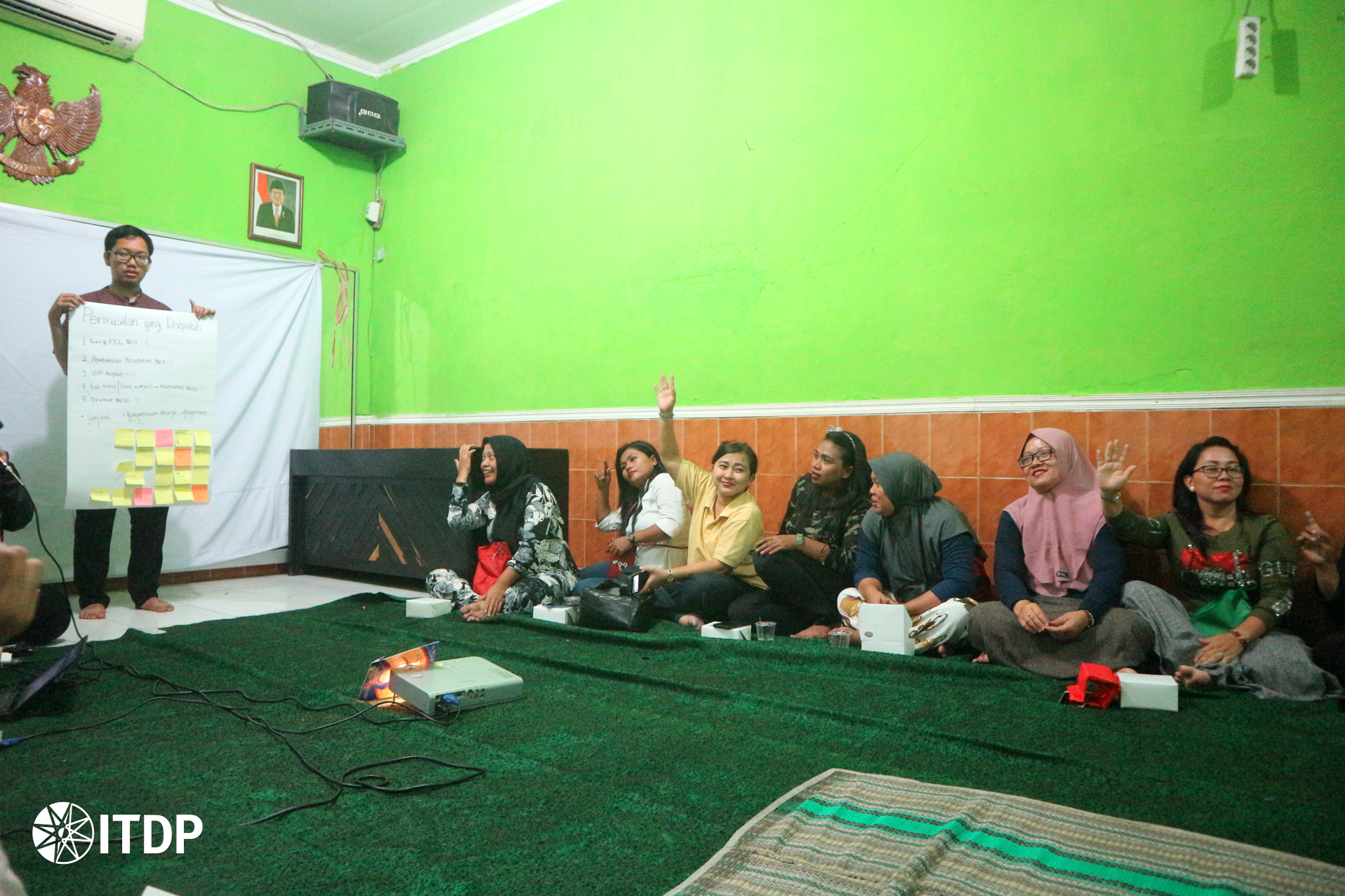February 29, 2024
The Forgotten Voices: Women’s Participation in Urban Planning
By Deliani Poetriayu Siregar, Urban Planning and Inclusivity Manager ITDP Indonesia
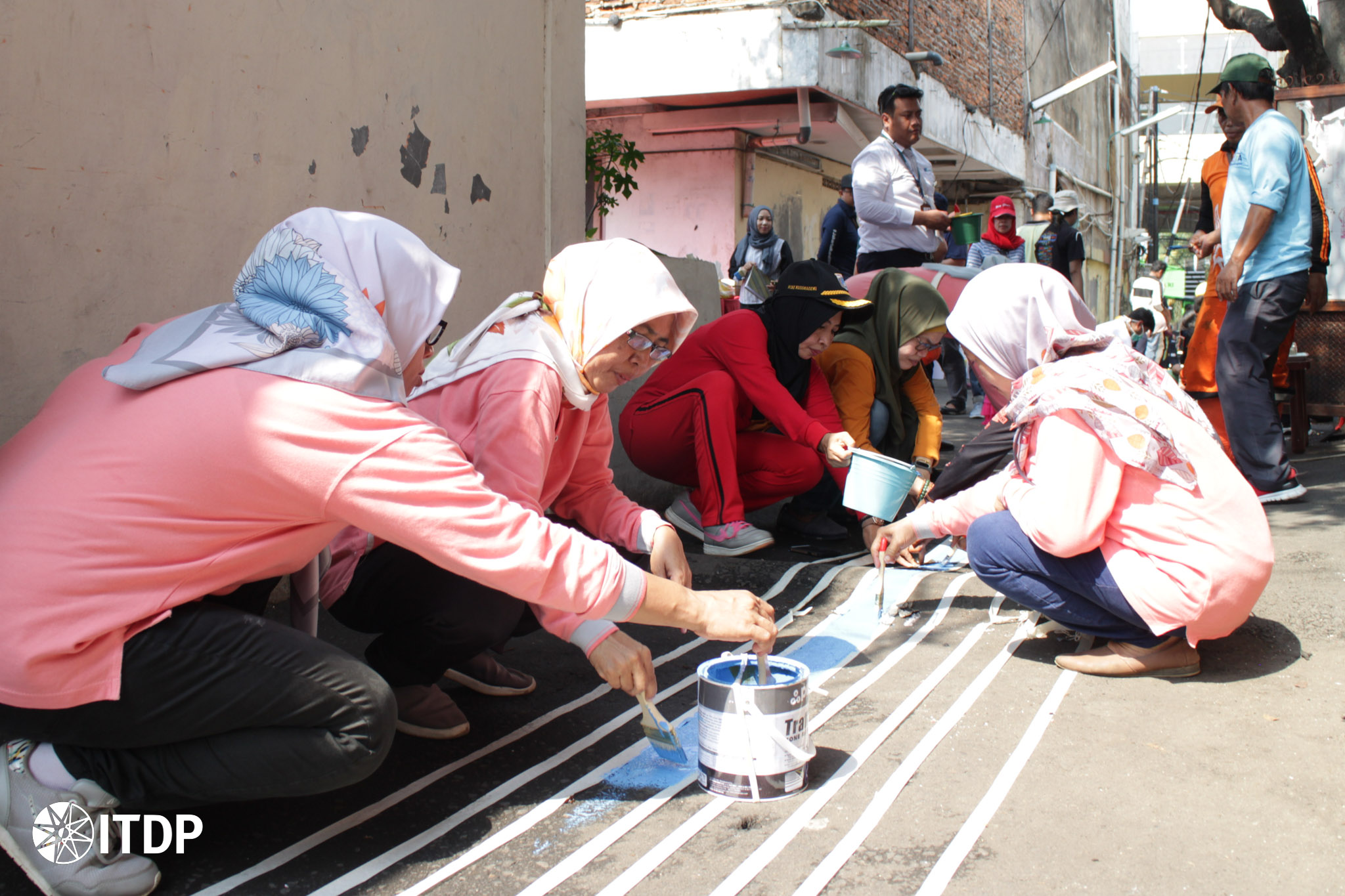
“Those women, they only know about social affairs. Transportation is easy by taking angkot,” said a Village Consultative Council (LMK) member in one of the urban villages in Jakarta.
Community involvement in urban planning is stipulated in Law No. 25/2004 on the National Development Planning System called the Development Plan Deliberation (Musrenbang). This forum is organized to accommodate the aspirations of various stakeholders in preparing national and regional spatial and development plans. They range from elements of government to the community. Unfortunately, the involvement of women and other vulnerable groups is not explicitly mentioned in the Musrenbang.
Based on ITDP Indonesia’s observations in the Kampung Kota Bersama program, Musrenbang forums that occur at the Neighbourhood and the Community Association (RT/RW) levels, sub-districts, or villages, it is rare to find the involvement of women as participants. Women’s presence is low to none. Women are considered incapable of technical matters. This assumption results in the limitation of women’s participation in urban planning, especially in public transportation planning.
The absence of women’s “voice” in urban planning processes, especially transportation, has created an inhospitable city for women. In addition to safety and security issues, inhospitable cities for women cause financial losses and potentially increase vulnerability. For example, women often spend more money on transportation than men. According to the UN Women’s Scoping Study in 2018, many women do not take up new job opportunities or job promotions because the work occurs at night or ends on the night shift due to the absence of cheap, safe, and secure transportation services at night. Then, how can we involve women in the urban planning process?
From Joint Audit to Urun Rembuk
ITDP Indonesia has developed and applied several methods to ensure women’s involvement in the public transportation planning process.
In 2017, ITDP Indonesia collaborated with UN Women Indonesia and Transjakarta to organize Safe Bus Journey activities. In this activity, participants were invited to walk on the sidewalk and use the Transjakarta bus to identify the obstacles. Afterward, a two-way dialogue was held to learn more about the participants’ concerns about using public transportation. This method was also used in other activities titled Women and The City in 2018 and the Puan-Puan Bersepeda initiative in 2022.
Another methodology is called joint audit. It aims to score the walking infrastructure. Before conducting the audit, female participants are provided with guidelines on using the audit tool through workshops, training, or manual distribution. This method is not only limited to printed form but can also work with digital mobile apps, such as Safetipin. ITDP Indonesia collaborated with UN Women Indonesia in 2018, using Safetipin to conduct limited audits on new sidewalks in Jakarta.
One-on-one interviews and individual journaling can also provide freedom for women to express their concerns, opinions, and suggestions without any fear, embarrassment, or hesitation. The implementation of this method begins with an explanation of the topic, question guidelines, and samples. This method is essential to get as many women’s “voices” as possible. Responses and unique notes from interviews and journaling may not have a direct relation to the main issue. Still, it can be linked as one of the factors influencing the decision-making process to do the mobility for women. For instance, in implementing Kampung Kota Bersama in one of the Community Associations (RWs) in North Jakarta, a woman’s journal pointed out the chicken manure in the alley as an important factor that prevented her from walking. Alternatively, a note about a pile of used goods or junk in one corner of the alley changed women’s perception of safety when passing the alley, especially when walking alone in the dark.
In Kampung Kota Bersama, a urun rembuk forum was defined as a joint discussion forum among the groups. This activity was conducted after the team received adequate data through joint surveys, interviews, and journalings. The method of implementing the procedure of clustered group discussions was used to contrast, confirm, and agree on the formulation of problems and solutions offered. The exciting part is that, in practice, in 27 urban villages in Jakarta, this forum also helped to mainstream gender issues. It made other groups easily understand or relate to the issues faced by women.
Another method is conducting a co-planning and co-design process that includes spatial mapping, planning, and design. This process can be done by preparing media, such as printed maps to large blank paper and writing or drawing tools to be utilized together in the co-design process. Practically, it also includes measuring the streets or alleys. #JalanJakarta is one of the ITDP activities that uses this method.
Those methods can be combined and applied in sequence in one holistic planning step. Applying more than one method in a planning process will have a better impact in terms of the level of involvement of women in the planning process. It also helps to place women not only as objects of urban planning but also as subjects of urban planning.
Regardless of the methods of involving women, the choices of location and timing are strongly influences women’s participation. Hence, flexibility in timing and choice of place for implementing the methods are strongly advised to happen in public events or spaces where women are the core part of it. Instead of creating a forum and inviting women to attend the community hall, it is more advisable to implement the method during free public health services in Kampung Kota, such as posbindu and posyandu services or women’s social gatherings. Collaboration with Juru Pemantau Jentik (Jumantik), a women’s group responsible for monitoring mosquito larvae, will also help to facilitate interviews, dissemination of survey forms, or daily journaling.
In conclusion, the involvement of women in urban and transportation planning is essential and possible. Apart from the participatory process, women should be seen not only as objects of urban planning but also as subjects of urban planning. Occupying important positions as urban planning experts, urban planning decision-makers, and users of urban space simultaneously. The absence of women as decision-makers results in policy outcomes that may be gender-biased. In addition, an emphasis on the availability of gender-segregated data is a later necessity. Without separate data, it can drive gender-insensitive policies. So, what are the reasons for not involving women?

